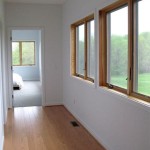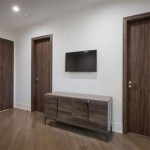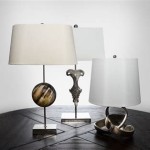Interior Wall Sheathing: The Foundation for a Strong and Durable Interior
Interior wall sheathing is a crucial component of any residential or commercial building construction. It serves as the structural backing for interior walls, providing strength, stability, and a smooth surface for finishes. This article will delve into the different types of interior wall sheathing, their benefits, and factors to consider when choosing the right sheathing for your project.
Types of Interior Wall Sheathing
Interior wall sheathing is available in various materials, each offering unique properties and advantages:
1. Gypsum Sheathing
Gypsum sheathing, also known as drywall sheathing, is a popular choice for interior walls due to its affordability, ease of installation, and fire-resistant properties. It is typically made from gypsum plaster and paper facing. Gypsum sheathing provides good sound insulation and can be readily finished with drywall compound, paint, or wallpaper.
2. Oriented Strand Board (OSB)
OSB sheathing is an engineered wood panel composed of wood strands bonded together with resin. OSB is known for its strength, stability, and moisture resistance. It is an excellent choice for areas prone to moisture, such as bathrooms and kitchens. However, OSB is generally less fire-resistant than drywall and can be more prone to dents and dings.
3. Plywood Sheathing
Plywood sheathing is made from thin layers of wood veneer glued together with alternating grain directions. Plywood is durable, strong, and can withstand moisture and temperature fluctuations. It is a good choice for areas requiring high structural integrity, such as load-bearing walls.
4. Cement Board Sheathing
Cement board sheathing is a durable and moisture-resistant material made from a mixture of Portland cement, sand, and cellulose fibers. It is ideal for wet areas like bathrooms and kitchens, as it is resistant to water damage and mold growth. Cement board is also fire-resistant and can be used as a base for tiling.
Benefits of Interior Wall Sheathing
Beyond its structural role, interior wall sheathing offers several benefits:
1. Strength and Stability
Interior wall sheathing provides a rigid backing for interior walls, ensuring stability and preventing sagging or bowing. It distributes weight evenly and reduces the risk of structural failure.
2. Sound Insulation
Sheathing can help to reduce noise transmission between rooms. Different types of sheathing offer varying degrees of sound insulation, so it's essential to consider this factor when selecting your material.
3. Moisture Resistance
In areas prone to moisture, using a moisture-resistant sheathing material like OSB, plywood, or cement board is crucial. It helps prevent water damage and mold growth. In areas with high humidity, it is also essential to use a vapor barrier in conjunction with sheathing.
4. Fire Resistance
Gypsum sheathing is inherently fire-resistant, making it a suitable choice for areas with fire safety concerns. Cement board sheathing also offers excellent fire resistance.
5. Smooth Finish
Interior wall sheathing provides a smooth and even surface for applying finishes like drywall compound, paint, or wallpaper. This creates a professional and aesthetically pleasing interior.
Factors to Consider When Choosing Interior Wall Sheathing
Selecting the right interior wall sheathing depends on several factors:
1. Budget
Gypsum sheathing is generally the most affordable option, while cement board and plywood tend to be costlier.
2. Moisture Resistance
In areas with high moisture levels, moisture-resistant options like OSB, plywood, or cement board are preferable.
3. Fire Resistance
Areas requiring high fire resistance should use gypsum or cement board sheathing.
4. Sound Insulation
If noise reduction is a priority, consider a sheathing material with good sound insulation properties.
5. Structural Requirements
For load-bearing walls, plywood or OSB sheathing is often used due to its strength and stability.
In conclusion, interior wall sheathing plays a vital role in creating durable, safe, and comfortable interiors. By understanding the different types of sheathing, their benefits, and the factors to consider when making a selection, you can ensure that your walls are properly prepared for the next stage of construction and provide a solid foundation for your project.

Interior Plywood Walls

Condensation On Wall Sheathing During Construction Greenbuildingadvisor

Using Osb Sheathing As An Air Barrier Vapor Ecohome

Sheathing To Interior Vs Exterior Greenbuildingadvisor

Floors And Walls Finishing The Shabin Interior Berries Barnacles

Etw Wall Double Stud With Spray Foam Construction Buildingscience Com

Floors And Walls Finishing The Shabin Interior Berries Barnacles

Osb Panels In Interiors From A Humble Material To Design Feature Archdaily

The Best Material For Shed Interior Walls Billyoh Com

Frames And Linings In Construction Interior Design Programs Walls Shed Plans








